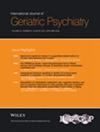Social Frailty and Social Isolation in the Context of Dementia: A Simultaneous Concept Analysis
Abstract
Objectives
Early management of risk factors related to social health such as social frailty and social isolation could modify the progression of dementia and reduce its impact on people with dementia. However, due to overlapping definitions and interchangeable use of measurement tools, the precise distinction between these two concepts is unclear. This simultaneous concept analysis aimed to examine the definitions and interrelationships between the concepts of social frailty and social isolation within the context of dementia.
Methods
The simultaneous concept analysis method developed by Haase et al. was employed. A literature search was conducted across six databases (Ovid Medline, CINAHL, PsycINFO, Scopus, Embase and Cochrane Library) to retrieve original research, review and theoretical papers, published in English. Data from the literature was synthesised and analysed thematically following Braun and Clarke's six steps.
Results
The attributes of concepts of social frailty and social isolation overlap, including being alone and having limited or less social activities, engagements or interactions. The specific attributes of social frailty are financial difficulties and less talk while social isolation is distinctly marked by a lack of social networks or social relationships. Socio-economic welfare is a specific antecedent of social frailty, while decreased access to social resources and lower social well-being are distinctive consequences of social isolation. Cognitive decline and dementia are distinctive antecedents of social isolation; however, they also exist as shared consequences of both social frailty and social isolation.
Conclusions
This simultaneous concept analysis clarified the similarities and differences between social frailty and social isolation in the context of dementia. A clearer understanding of the interrelationships between social frailty and social isolation and distinct and overlapping characteristics of them will support strategies to comprehensively address social health issues experienced by people with dementia.


 求助内容:
求助内容: 应助结果提醒方式:
应助结果提醒方式:


